On a chilly December day, I drove to Greenwich (do not do this, by
the way; if you don't have twenty-odd quid in coins or a disposable
credit card, just park in Lewisham, it's less hassle) and visited the
National Maritime Museum. (Many photos follow;
cc-by-sa on
everything.)
First stop was the Painted Hall of the old
Greenwich Hospital,
originally intended as a refectory for the residents but deemed too
grand and never used as such.
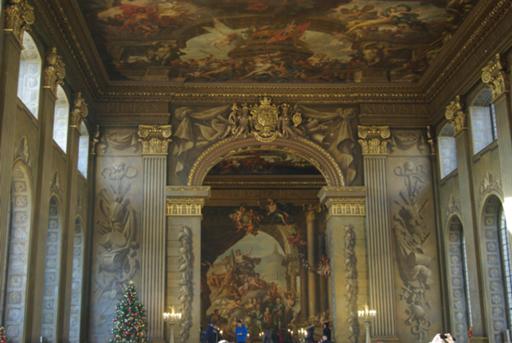







I find it particularly interesting that much of what would normally be
carved decoration is painted here. For ease of cleaning?



Then on into the museum proper, and this rather splendid builders'
model of the battleship King George V, as originally fitted out in
1940. (The twin-over-quad turret is distinctive even to me, and I
don't know a lot of ship shapes.)




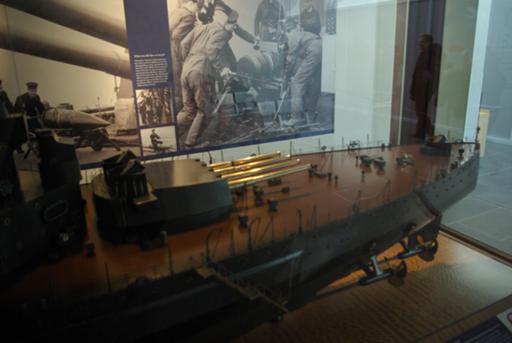
Note seaplane rails and cranes.

Launchers for
Unrotated Projectiles
(aerial mines) on the aft turret.



Prince Frederick's Barge,
used for over a hundred years; lent to the Museum in 1951.





Miss Britain III,
first single-engined boat to exceed 100mph and first boat to do so on
salt water.


Last of the non-aquaplaning hulls? That's a front rudder there for
greater control. and the engine's in the bow section too, with shaft
leading leftwards to the propeller.

Powered by a modified Napier Lion. Because when you really want
precision engineering, you go to Napier.

Suitcase with steamship line baggage labels.

Early automobile torpedo (Fiume 12-inch baby torpedo circa 1880):
propelled by a compressed-air engine to cover 200 yards at six knots.

Propeller for a Type 23 frigate.

A variety of sextants and other tools.





Baltic Exchange memorial window (removed and restored after the
bombing in 1992, before the rest of the building was vandalised by
English Heritage and John Prescott).


I'd frankly expected more ship models, but we did find these from the
Great War.
SMS Dresden,
armoured cruiser.

HMS Jackal,
Acheron-class destroyer.

SMS Scharnhorst,
cruiser.

HMS Doris,
Eclipse-class protected cruiser.

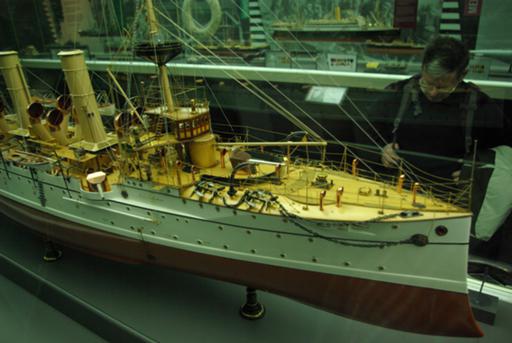
HMS Iron Duke,
lead dreadnought battleship of her class.

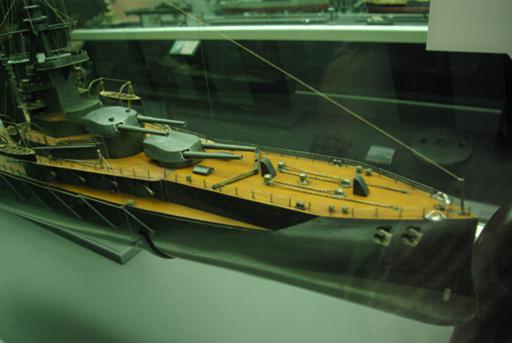
HMS Tarantula,
Insect-class gunboat. Yes, I know.
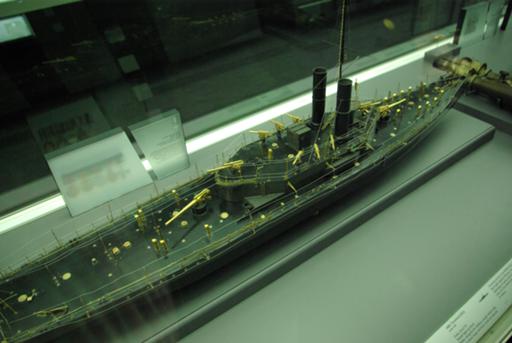


Coastal motor boat. Note the single torpedo, carried aft: no room for
a tube, it was ejected backwards off the rack by a cordite charge, and
a trip-wire would start the motor while the boat turned sharply aside.
There is no record of a boat's having been hit by its own torpedo. One
suspects they didn't often hit the enemy either.

SMS G37, Großes
Torpedoboot.

HMS P34, patrol boat. (Note single torpedo mounts. Only one of this
terrifying weapon need be fired at a time!)

HMS Ludlow, auxiliary minesweeper.

HMS Snapdragon, Arabis-class sloop (another minesweeper).
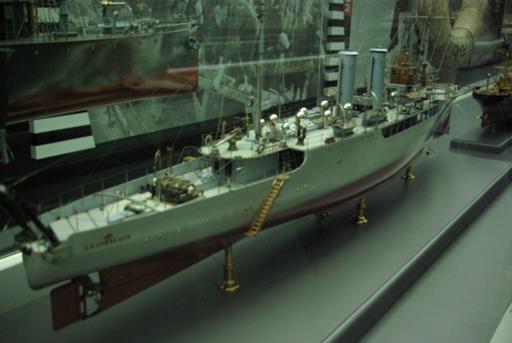
SS Springwell, cargo ship.

K-class submarine. Built with steam turbines so as to be able to keep
up with the fleet, but this made them big; the maximum diving depth
was less than their own length. Of the eighteen built, six were lost
to accidents; none to enemy action.
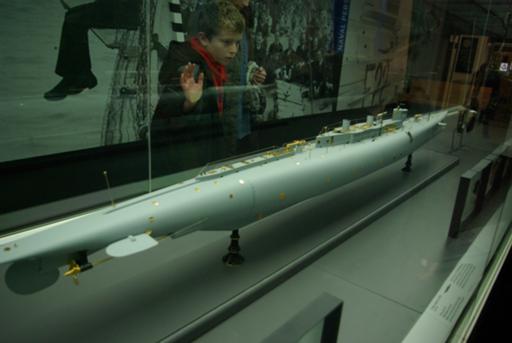



Decorative lanterns.

We moved on to the Queen's House, where one is requested not to
photograph the paintings. I did however get these shots of the ceiling
and floor of the Great Hall, being blatant about its classical
proportions.

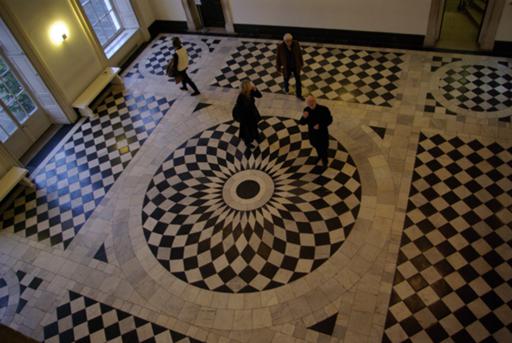
Several paintings by Stephen Bone impressed me, including
Strike Down Aircraft after Refuelling: On Board an Aircraft Carrier,
On Board an S-Class Submarine: Up the Conning Tower
(which I'm sure I've seen somewhere before), and
S-Class Submarine:The Wardroom and Forward Mess Deck Seen through the Davis Escape Chamber.
The one that really begged me to take it home, though, was Montague
Dawson's HMS 'Implacable' in the Dardanelles, 25 April 1915 - of
which, naturally, I can't find an image on-line. Bother it. (The ones
you'll find on an image search are not the right one.) But
the Museum's description
may give some impression.
And we emerged to a rather splendid sunset.

On the way home, Cutty Sark against the sky-glowed clouds.

Comments on this post are now closed. If you have particular grounds for adding a late comment, comment on a more recent post quoting the URL of this one.